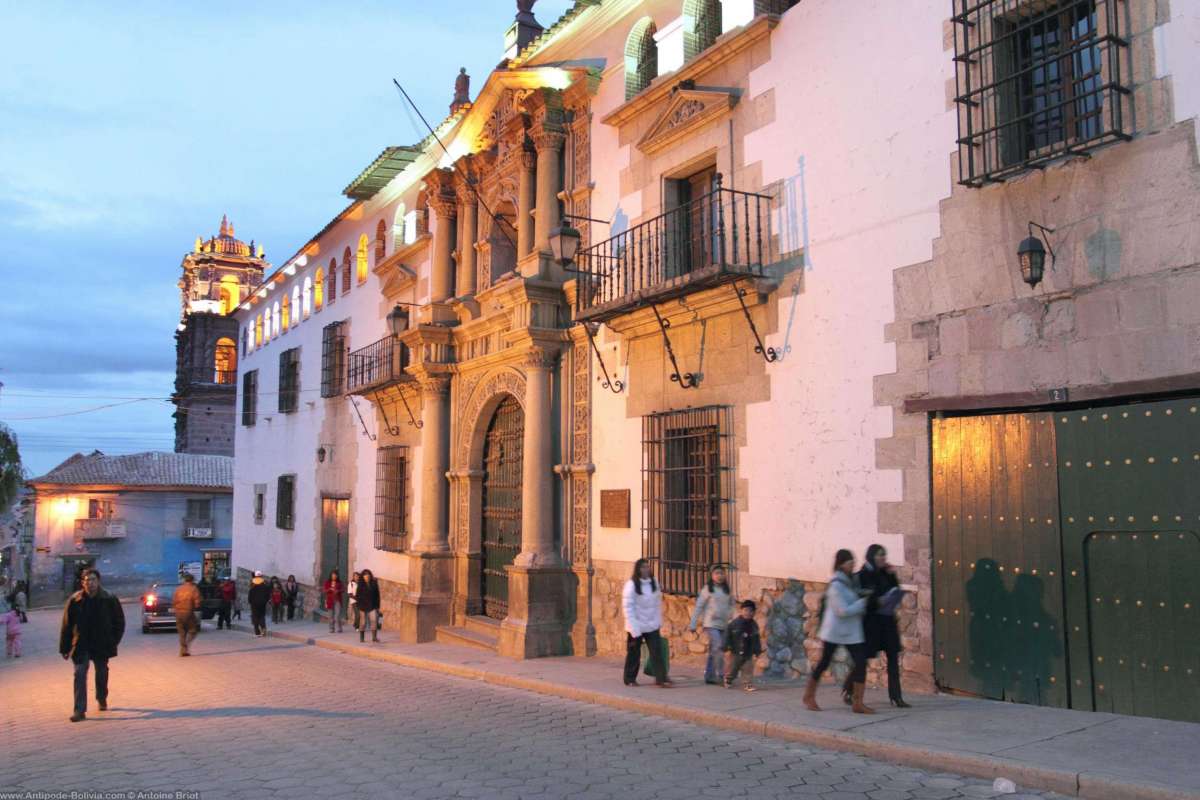

Potosi
In the south-west of Sucre, at more than 4000m height and to the bases of reddish mounts, stands the proud Potosi. The history of its inhabitants is inexorably in relation with silver, this metal that caused the demographic and economic boom of the city during three centuries, as well as its fall and poverty that came after when it began to be rare. The richness of the region’s basements gave to the city the nickname of “imperial city”, envied by kings like Charles Quint. The expression “Vale un Potosi” (It costs a Potosi), from Miguel de Cervantes, has finished with the reputation of the queen of the American cities. In parallel, Potosi is the exact symbol of slavery for the local population who were exploited for the richness and murdered for the war efforts and the luxury of the Spanish monarchy. Nevertheless, the created richness left to the city a precious inheritance of baroque architecture; 33 churches, colonial houses with massive appearance, the Casa de la Moneda… Declared World Heritage Site in 1987, those ruins reflecting a lavish past cover the actual city, today smaller, with a fragrance from the past, where life in mines and in altitude are even more difficult for those who live on an ongoing basis.



